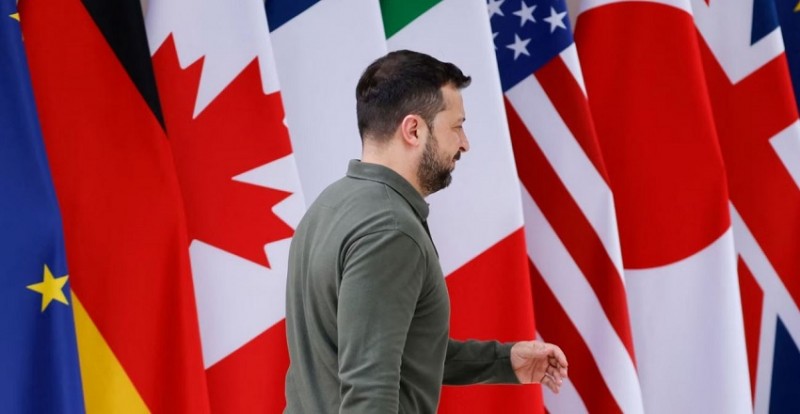
The G7 has agreed to leverage frozen Russian assets to secure a $50 billion loan for Ukraine, aimed at supporting its fight against Russian forces.
US President Joe Biden emphasized that this move is a clear signal to Russia that the international community remains steadfast in its support for Ukraine. In response, Russia has threatened severe retaliatory measures.
Read More:
The funds are expected to be available by the end of the year, providing a long-term boost to Ukraine's war effort and economy. During the G7 summit in Italy, Ukrainian President Volodymyr Zelensky and President Biden also signed a historic 10-year bilateral security agreement between Ukraine and the US. This agreement includes military and training aid, although it does not obligate the US to deploy troops to Ukraine.
Key Details:
Frozen Assets: The G7, alongside the EU, froze approximately $325 billion in Russian assets following Russia's invasion of Ukraine in 2022. These assets generate about $3 billion annually in interest.
Loan Structure: The $3 billion in annual interest will be used to cover the yearly payments on the $50 billion loan for Ukraine, sourced from international markets.
Summit Statements: At a joint press conference in Puglia, Italy, President Biden stated that the loan will actively support Ukraine and reinforce the message to President Putin that the international community will not waver.
Ukraine's Gratitude: President Zelensky expressed deep gratitude to the US and other allies, calling the new security agreement a landmark moment since Ukraine's independence in 1991.
The G7 nations, including Canada, France, Germany, Italy, Japan, the UK, and the US, have been crucial in providing financial and military aid to Ukraine. UK Prime Minister Rishi Sunak described the $50 billion loan as "game-changing."
Read More:
Comparisons and Future Needs:
Previous Aid: The $50 billion loan is significant compared to the $61 billion in US military aid approved in May.
Immediate Needs: Despite the loan, Ukraine continues to urgently require more weapons, especially air defense systems and F-16 fighter jets, to counter Russian missile and drone attacks.
Symbolic Victory: The loan deal symbolizes a significant step for Ukraine, making Russia indirectly contribute to Ukraine's defense and recovery.
Challenges and Reactions:
Read More:
Push for More Funds: Some in Kyiv had hoped for the release of the entire $300 billion frozen fund, but the European Central Bank ruled this out.
Delay in Funds: The loan money is expected by the end of the year, so it will not affect the current war situation immediately.
Russian Retaliation: Russia has threatened "extremely painful" measures in response to the G7's decision.
Read More:
Most of the frozen Russian assets are held in Belgium, and international law currently prevents the direct confiscation of these assets to be given to Ukraine. This financial strategy marks a significant point in the conflict, as highlighted by one of Zelensky's close advisers.
Read More: